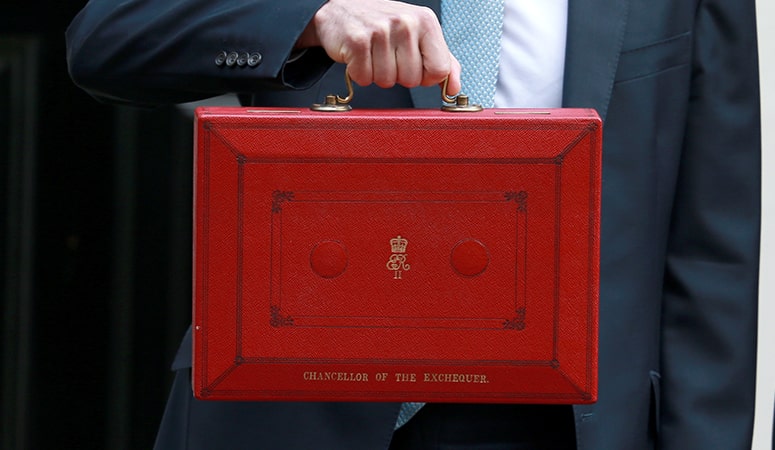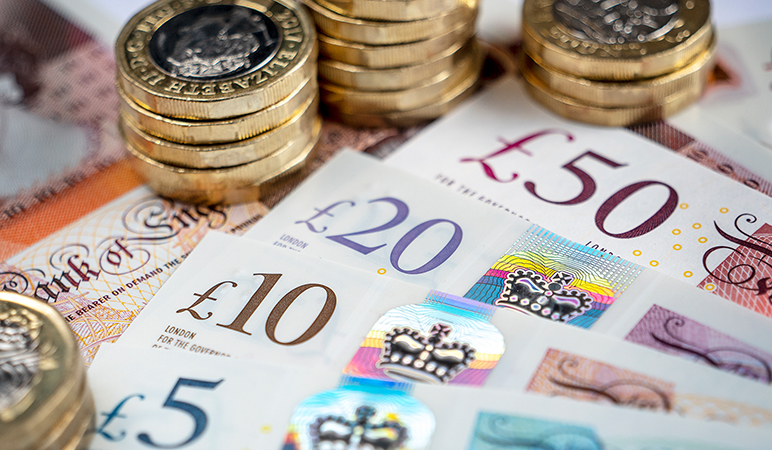Capital Gains Tax and ISAs
You may remember that prior to April 2023, you could make a gain of up to £12,300 without paying capital gains tax (CGT). This was reduced to £6,000 in April 2023 and to £3,000 in April this year. There’s a lot of speculation that given the sharp decline in the allowance over the last couple of years, it could be removed completely, meaning any gains you make, whether stocks and shares or property, could be liable to capital gains tax.
The current rates are based on whether you are a lower or higher-rate taxpayer and vary dependent if the gain is made from stocks and shares or property. For stocks and shares gains, this is 10% for a basic-rate taxpayer and 20% for a higher or additional-rate taxpayer. Speculation suggests that capital gains tax rates could be aligned with income tax bands, essentially doubling the amount of capital gains tax being generated, and more for additional-rate taxpayers.
How could this impact you?
From an investment perspective, many clients use their annual Individual Savings Account (ISA) allowance each year, which is currently £20,000 per person. Given the restriction on the amounts you can put into an ISA each year, many individuals invest funds into a General Investment Account (GIA) and then move £20,000 over to their ISA when the new annual allowance becomes available, this is known as Bed and ISA.
The Bed and ISA process results in the investments being sold within the General Investment Account and rebought in the ISA wrapper. At the point of the sale, this crystallises a gain. Many individuals are able to offset the gain each year against the £3,000 allowance but if this is removed it could result in more investors paying capital gains tax. Furthermore, with the potential of the rate doubling, this could impact the return of investment significantly upon sale.
Under the current rules, capital gains tax dies with an individual. An example of this would be an individual with a gain of £100,000 on their stocks and shares portfolio (non-ISA). If this was sold in the individual’s lifetime, capital gains tax would be due. If the individual dies, capital gains tax would not be charged. There is the risk that this could be changed, and capital gains tax may be charged on the death of an individual, which could be in addition to an inheritance tax (IHT) liability.
So, what could you do now? If you haven’t already, you could look to use your ISA allowance prior to the budget, should changes be made with immediate effect. Or, if you haven’t yet started the Bed and ISA process, it might be worthwhile doing this now while the capital gains tax allowance is still available.
For future investing, we suggest using your annual ISA allowance, given investments can grow free of capital gains tax and income tax. Upon death, as an ISA can grow tax free, there would be no capital gains tax to pay, eliminating the risk of the change to the rules on death. ISAs can be inherited by a spouse or civil partner, meaning they will remain within an ISA structure upon inheriting them, protecting against such risks later down the line.
So, are ISAs the answer?
Well, you cannot hold direct property in an ISA, so not from this perspective; but from a stocks and shares point of view, they play a very important role. It is, however, important to be mindful that the tax relief provided by ISAs costs the exchequer £5 billion[1] a year, and this could increase further if more people start using their ISAs to mitigate capital gains tax liabilities. So, there is a risk that a cap could be put on the amount you can hold in ISAs; speculation suspects this to be around £500,000 per individual. There could be changes made to the amount you could put into an ISA, but with the Government wanting to simplify ISAs, this should encourage more ISA participation.
Pension contributions
When it comes to pension contributions, to date, we have enjoyed tax relief at the highest marginal rate for new money going in, and that means basic-rate taxpayers get 20% while higher-rate taxpayers get 40% and additional-rate taxpayers get up to 45% tax relief on pension contributions. Therefore, a £60,000 pension contribution could effectively cost you £33,000 with £27,000 worth of additional rate tax relief. For Scottish taxpayers, the rates of income tax differ from the rest of the UK and therefore tax relief differs but could be between 20% and 48% (so an additional rate cost of £31,200 in the above example).
Chancellor of the Exchequer, Rachel Reeves, has previously pioneered a flat rate of tax relief on pensions. A 30% rate of tax relief on pensions would be extremely powerful for basic-rate taxpayers, while still incentivising long-term savings for higher and additional-rate taxpayers.
The Institute for Fiscal Studies has estimated that replacing the current tiered pension tax relief system with a flat 30% rate could generate an additional £2.7 billion per year and it could be taken even further by limiting tax relief to basic rate only, with a massive saving of £15 billion.[2] So, while we simply don’t know what the budget will bring, for those who have been considering making pension contributions who are currently higher or additional-rate taxpayers, we would strongly suggest you speak to your adviser about what, if any, action you should take before the budget is announced.
Many of our clients make company pension contributions or make contributions via salary sacrifice as company contributions, which currently attracts no income tax and National Insurance (NI) for the recipient and no NI for the employer. There have been rumours of changes here too, with potentially National Insurance payable by employers on these employer contributions. This would add 13.8% of NI to employer contributions, predicted to generate £23.8 billion per year in savings.[3]
A possible worst case and unlikely scenario could be higher-rate tax paid on the contribution by the employee, perhaps via a tax return, or even NI by the employee irrespective of tax bracket.
As with all speculation, there is no guarantee of changes, and the rules may be the same on 1 November as they are today – it is difficult for HMRC, payroll companies and pension providers to change things overnight.
Pension tax-free cash
Under current rules, most people can draw 25% of their pension fund tax free, capped at a maximum tax-free payment of £268,275, although some individuals may be entitled to higher amounts if they have any form of protection or guarantees associated with their tax-free lump sum. In any event, there are rumours that the new budget could lower this limit which could then have the effect of reducing the amounts clients can withdraw.
Most clients have already discussed this in detail and have reached an informed decision on this matter. However, if you’re over 55 and haven’t been in touch already we strongly recommend you speak with your adviser as soon as possible to discuss this.
As a business we are certainly not stipulating removing all tax-free cash from pensions as the clear course of action for all clients, especially as the budget may not include any changes, or at least not immediately. As we know, pensions can grow tax free in your lifetime and can be passed to your beneficiaries on death without being subject to inheritance tax (IHT) under current legislation. Therefore, drawing your tax-free cash now without the need for it may cause wider implications, including potential tax consequences on future pension growth or on your estate for inheritance tax purposes.
As with all financial planning matters this simply highlights the importance of seeking professional advice to understand the full impact and determine the best course of action for your individual circumstances.
This article has been produced for information purposes only and is based on our current opinion which could change. With investments, your capital may be at risk and past performance is not a guide to future returns. Your investments can go down as well as up. ISA, pension and tax rules apply and may change. Mattioli Woods Limited is authorised and regulated by the Financial Conduct Authority.
We recommend that you contact your consultant if you have any concerns regarding the upcoming budget.
[1] ISA numbers rise but will chancellor rein in ISA benefits at the Budget? – BDO
[2] Raising revenue from reforms to pensions taxation | Institute for Fiscal Studies (ifs.org.uk)






